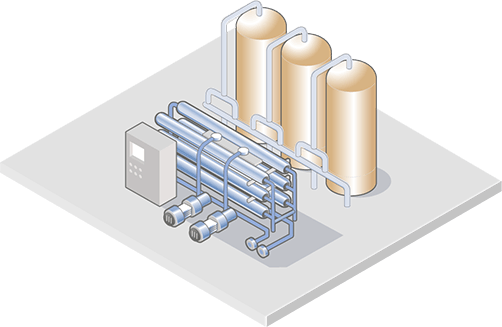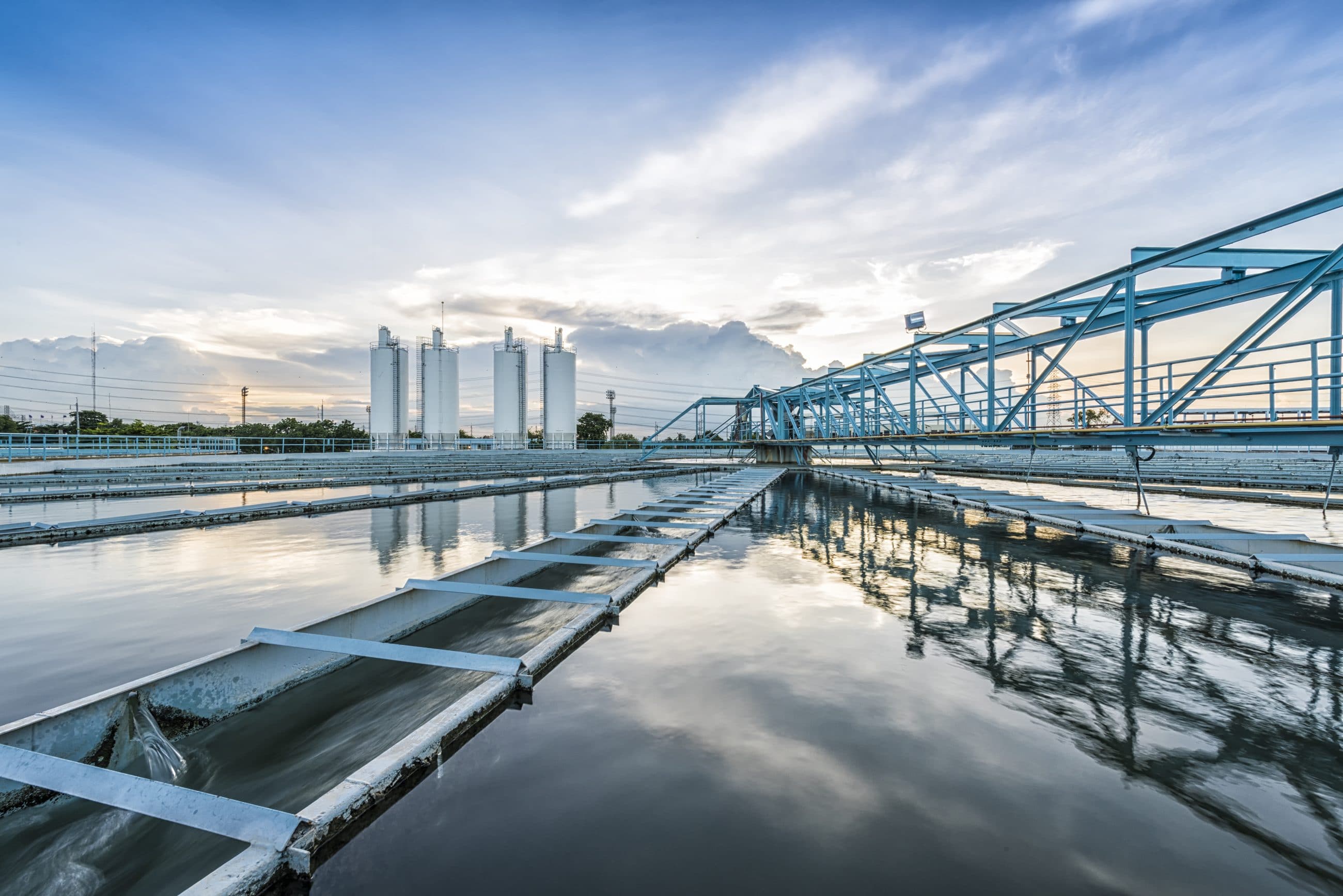Industrial Waste Water Treatment-- Industrial-Grade Water Filtration and Purification Solutions
Industrial Waste Water Treatment-- Industrial-Grade Water Filtration and Purification Solutions
Blog Article
Difficulties and Solutions in Hazardous Waste Water Therapy
The therapy of commercial wastewater presents a multifaceted variety of difficulties, varying from rigorous governing conformity to the ins and outs of expense management and technical restrictions. The variability in waste make-up additionally makes complex the performance of conventional therapy techniques, often resulting in escalated functional expenses.
Regulatory Conformity Obstacles
How can industrial centers navigate the complicated landscape of regulative conformity in wastewater treatment? The regulative structure governing wastewater management is multifaceted, frequently varying by jurisdiction and type of industry. Facilities should stick to federal, state, and neighborhood regulations that determine effluent high quality standards, discharge limitations, and surveillance demands. Failing to abide can cause severe charges, including fines and operational closures.
To successfully take care of these compliance obstacles, centers must execute durable surveillance and reporting systems that ensure real-time data collection and analysis. Normal audits and danger evaluations can identify prospective compliance gaps, permitting for positive adjustments in treatment procedures. Employee training programs concentrating on regulatory expertise and finest practices are vital to foster a culture of compliance within the organization.
Furthermore, engaging with regulatory firms can supply important understandings and clear up ambiguous regulations. Facilities might additionally gain from talking to ecological professionals that focus on wastewater treatment compliance, guaranteeing that they remain abreast of advancing guidelines. By taking on these methods, commercial facilities can not only satisfy conformity demands yet also boost their functional efficiency and ecological stewardship.
Price and Economic Barriers
Browsing regulative compliance in wastewater therapy commonly presents considerable monetary challenges for industrial centers. The prices linked with carrying out needed therapy modern technologies, keeping compliance with stringent laws, and handling operational expenditures can be intimidating. Numerous organizations encounter high initial capital investment for the building and construction or updating of wastewater therapy plants, which might strain spending plans, particularly for tiny and medium-sized business.
Additionally, recurring functional prices, consisting of maintenance, labor, and chemical inputs, add to the economic burden. The changability of changing energy costs and the prospective need for extra investments to fulfill advancing laws exacerbate these financial stress. Oftentimes, the lack of monetary motivations or assistance from government bodies makes it even a lot more tough for businesses to warrant financial investments in sophisticated treatment systems.
Furthermore, the financial practicality of wastewater therapy remedies is commonly examined, particularly for industries with tight earnings margins. As a result, it is essential for industrial facilities to check out economical strategies, such as adopting innovative funding choices, involving in partnerships, and leveraging arising modern technologies that can help alleviate these financial barriers while making sure compliance with environmental requirements.

Technical Limitations
Various technological constraints prevent the efficiency of industrial wastewater therapy processes. One considerable challenge is the insufficiency of existing therapy innovations to attend to complicated impurities. Several traditional approaches, such as turned on sludge and chemical rainfall, deal with the elimination of emerging toxins, consisting of microplastics and pharmaceuticals. This limitation commonly leads to the content discharge of inadequately this link treated water, which can have destructive environmental impacts.
Furthermore, the scalability of therapy technologies postures a challenge. While some innovative methods, like membrane filtration or innovative oxidation, show assurance in regulated atmospheres, their implementation on a larger scale can be practically challenging and prohibitively pricey. Maintenance and operational complexities further make complex the fostering of these systems, specifically for smaller sized industries with restricted technological competence.
The integration of real-time tracking innovations also stays not enough in many treatment centers. Without effective tracking systems, operators can not appropriately analyze treatment performance or detect prospective failings, resulting in irregular effluent top quality. As a result, resolving these technological restrictions via r & d, alongside investment in innovative remedies, is important for boosting the efficacy of industrial wastewater treatment and ensuring regulatory compliance. Industrial Waste Water Treatment.
Variability in Waste Composition
In the world of commercial wastewater treatment, the irregularity in waste structure provides a formidable challenge. Industries generate wastewater with diverse features, affected by elements such as manufacturing processes, resources, and functional methods. This diversification complicates the treatment procedure, as conventional systems frequently have a hard time to successfully deal with the large range of contaminants present.
As an example, wastewater from food handling might have high levels of raw material, while effluents from chemical production can consist of heavy steels and unsafe materials. This difference requires why not check here versatile treatment strategies to guarantee conformity with environmental guidelines and secure public wellness. In addition, fluctuations in waste composition can occur gradually, influenced by modifications in production timetables, maintenance activities, or the introduction of brand-new items.

Ingenious Treatment Solutions
Ingenious therapy remedies are vital for attending to the intricacies of commercial wastewater administration. Typical methods usually fall short in successfully eliminating a vast array of contaminants, specifically in facilities with diverse effluent streams. Recent developments concentrate on integrating cutting-edge technologies to enhance therapy effectiveness and sustainability.
One appealing strategy is the use of sophisticated oxidation processes (AOPs), which utilize powerful oxidants to break down organic contaminants. AOPs, including photocatalysis and ozonation, can considerably reduce toxic compounds and boost effluent high quality. In addition, membrane layer bioreactor (MBR) technology has gotten traction, combining organic therapy with membrane layer filtration, resulting in top notch effluent and reduced footprint.
One more ingenious service is the execution of resource recuperation systems. Techniques like anaerobic digestion not only treat wastewater but likewise produce biogas, which can be taken advantage of as an eco-friendly power source. Furthermore, the fostering of expert system and artificial intelligence models can optimize therapy processes by predicting variations in wastewater make-up, thus boosting functional efficiency.
These innovative solutions not only address governing compliance however likewise promote ecological sustainability, leading the way for a more effective and resilient commercial ecosystem.
Final Thought
Finally, addressing the challenges of industrial wastewater therapy needs a diverse method that integrates regulatory compliance, expense management, and technological innovations. Ingenious options, such as sophisticated oxidation procedures and membrane layer bioreactor technology, offer pathways to enhance treatment performance. Real-time monitoring systems and collective interaction with regulatory companies can promote lasting practices while alleviating economic pressures. A dedication to continual enhancement in treatment methods will ultimately add to the efficient management of commercial wastewater and environmental protection.
The treatment of industrial wastewater presents a diverse selection of challenges, ranging from strict governing compliance to the ins and outs of price monitoring and technical limitations. Industrial Waste Water Treatment.Navigating regulative conformity in wastewater therapy frequently offers significant economic difficulties for commercial centers. Addressing these technical limitations with research and development, along with financial investment in ingenious remedies, is essential for boosting the efficiency of commercial wastewater therapy and guaranteeing regulative conformity
Wastewater treatment centers must invest in robust monitoring systems and adaptable therapy innovations capable of accommodating differing influent features.In conclusion, dealing with the obstacles of industrial wastewater therapy requires a multifaceted approach that integrates governing conformity, expense management, and technical advancements.
Report this page